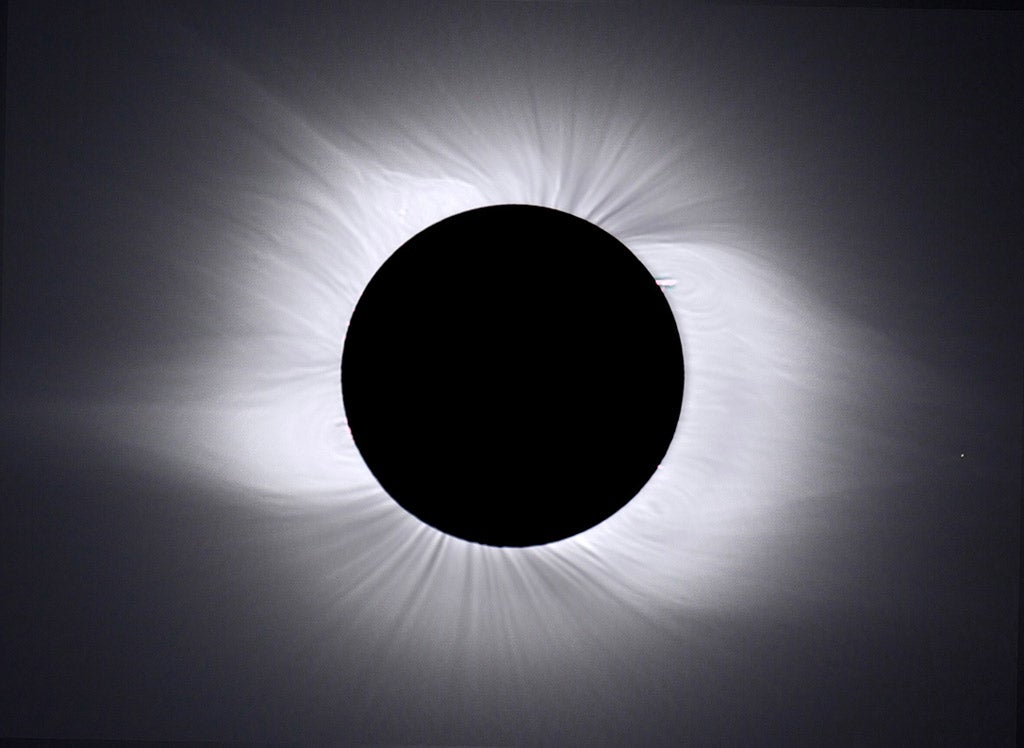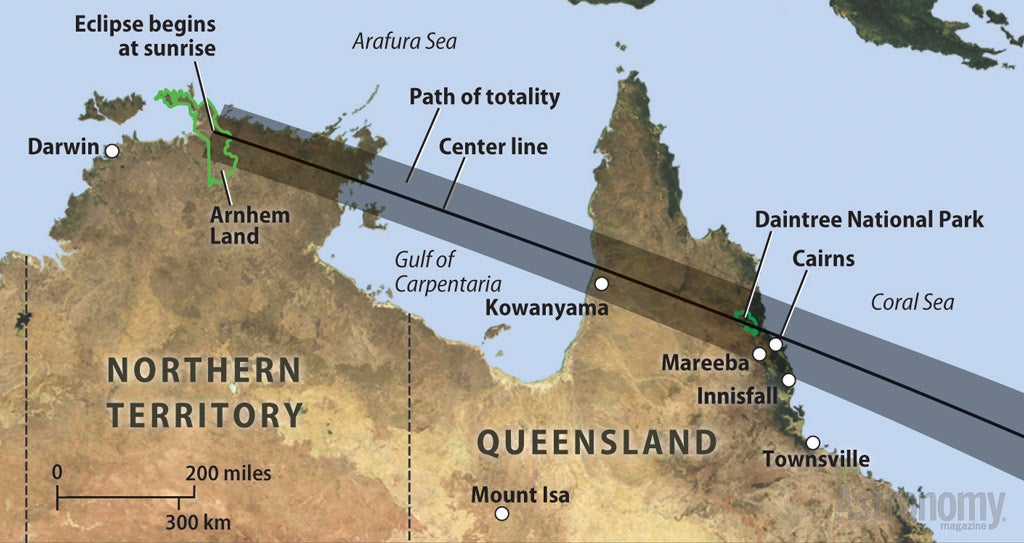Remote observing note: Join Astronomy Contributing Editor Bob Berman in Cairns, Australia, as he broadcasts the total solar eclipse live with SLOOH Space Camera at http://events.slooh.com.
The place to be the morning of the 14th is northern Australia. The path of totality begins along the coast of the Northern Territory, about 155 miles (250 kilometers) east of Darwin. The track then crosses the Gulf of Carpentaria before cutting across the Cape York Peninsula in northern Queensland. After that, the path heads across the Pacific Ocean and doesn’t make landfall again.
For those who want to maximize both the length of totality and the chances for favorable weather, the best bet is to view from Queensland’s east coast or a bit offshore. From Cairns, famous as the gateway to the Great Barrier Reef, the Sun rises at 5:35 a.m. local time, and the partial eclipse begins 10 minutes later. Totality starts at 6:39 a.m. and lasts precisely two minutes. Viewers on the shadow’s centerline some 19 miles (30km) north of Cairns gain an extra five seconds of totality. Climate statistics suggest the odds of sunshine in the early morning hours along the Australian coast are around 65 percent, and a few percentage points better in the offshore waters.
“Viewing a total solar eclipse is unlike any other sight,” says Astronomy magazine Contributing Editor Mike Reynolds. “It’s the most dramatic event most people will ever see.”
A few minutes before totality, as the slightly larger Moon advances on the dwindling Sun, the solar crescent starts to break up. Mountains on the Moon’s limb poke through the tiny sliver while sunlight continues to stream through lunar valleys. At that time, viewers see a phenomenon astronomers call Baily’s beads.
The most spectacular aspect of the total phase is the Sun’s corona, a pearly white light that typically stretches two or three times our star’s diameter. Look for delicate loops, swirls, and streamers throughout the corona; use binoculars or a low-power telescope to see more detail.
“Don’t forget to take a few seconds to look around the sky for bright planets and stars,” Reynolds suggests. “But not too long. The main show is the Sun, and two minutes zooms by pretty fast!”
Solar prominences — the fiery red tongues of gas that arc above the Sun — may also appear around the Moon’s edge. Like the corona, prominences appear only during total solar eclipses when the Moon hides the Sun’s brilliant surface from view.
Barely two minutes after totality begins, a second diamond ring announces its conclusion. Viewers then must replace their solar filters or put on their eclipse glasses to safely enjoy the partial phases as they play out in reverse.











